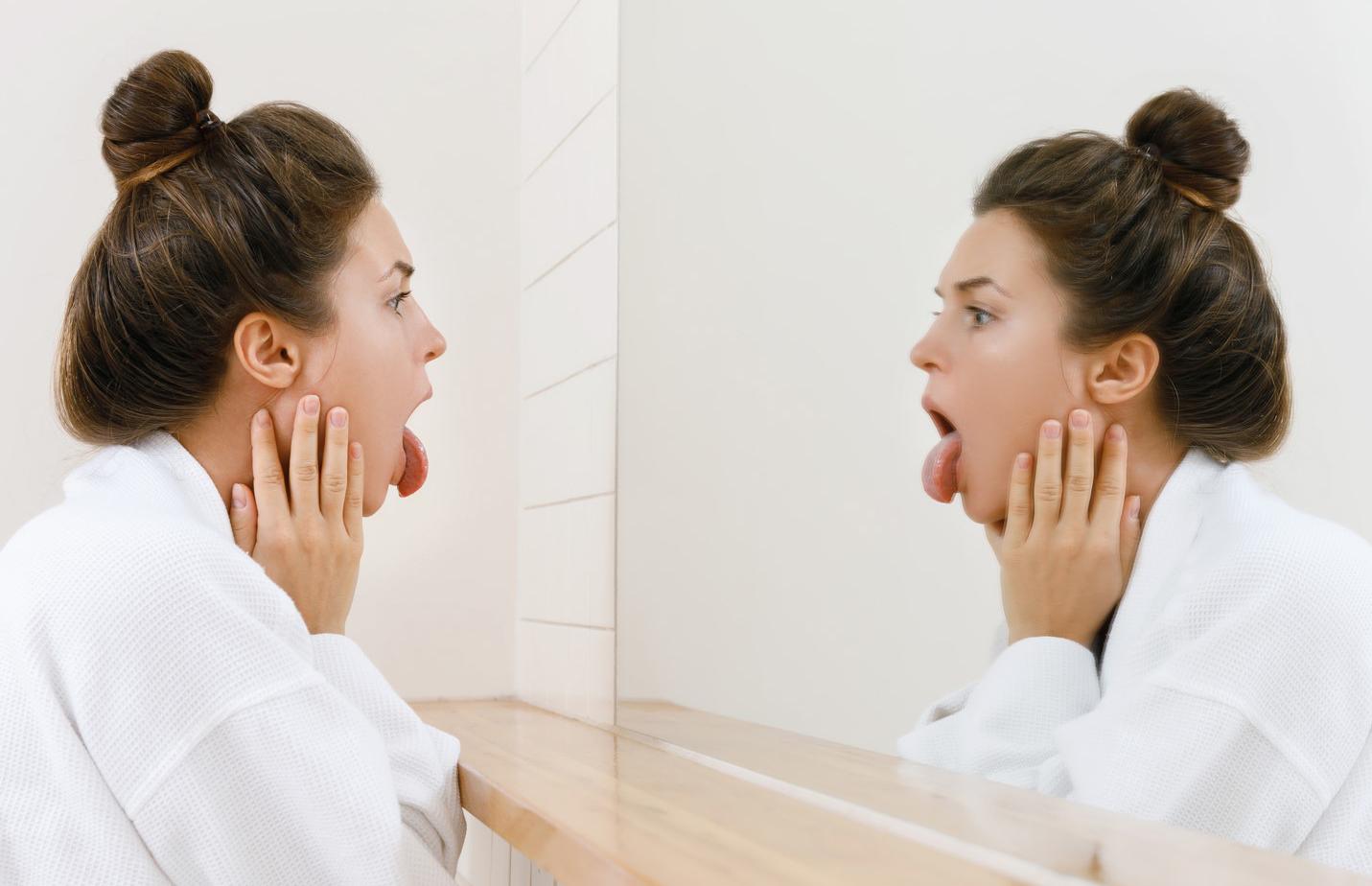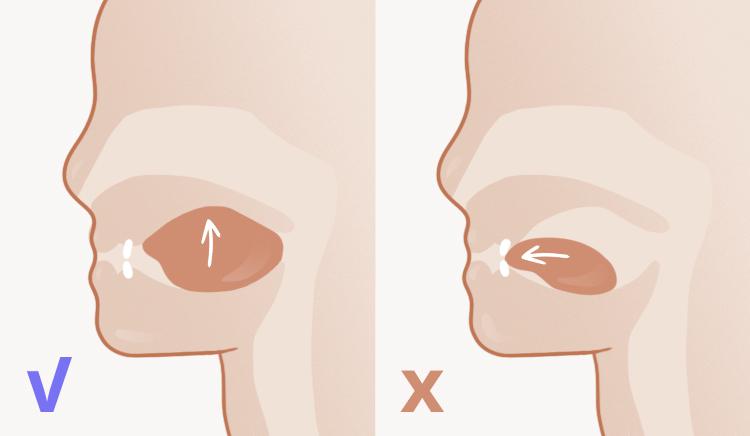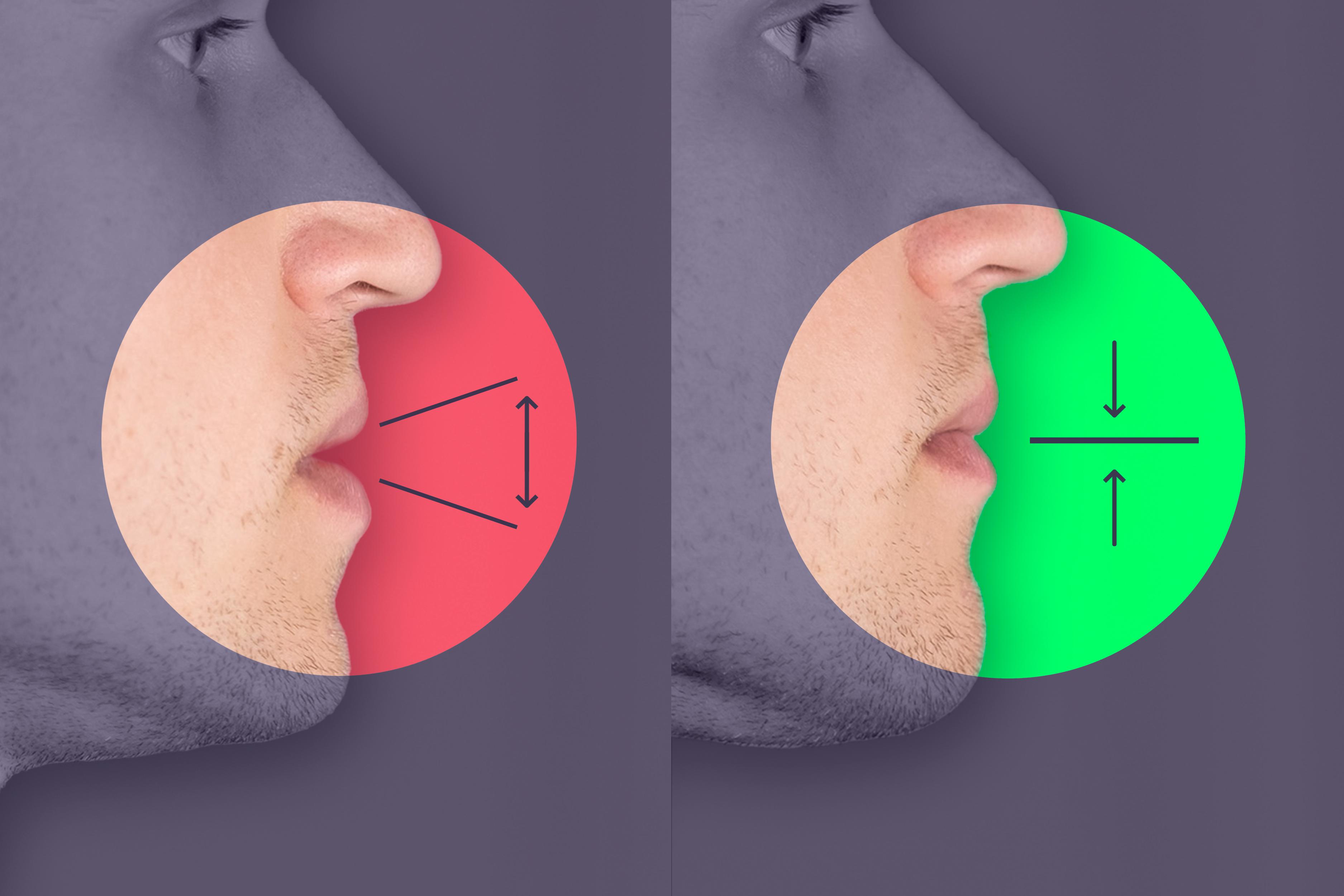
The mewing technique is a seemingly simple exercise in which the tongue is pressed tightly against the palate. According to the authors and supporters of the method, this way you can correct the shape of your face, its symmetry, and even get rid of some diseases. There is no reliable and full-scale evidence of this, however, some of Mewing’s ideas have a scientific basis. Together with experts, we’ll figure out what mewing is—another Internet trend or a working technique.
- What is this
- How to do
- Effect
- Contraindications
Tatyana Ishchenko, dentist-orthodontist, orthopedist at the DR Minko clinic;
Lyudmila Altapova, osteopath at the European Medical Center (EMC).
What is mewing

English orthodontist John Mew proposed his approach to the correction of maxillofacial structures in the 1970s and called it orthotropic treatment
Mewing is a non-invasive technique for correcting the structure of the face, teeth and oval of the lower jaw, which is based on the principle of the special position of the tongue (1). The name of the method is derived from the name of its author, the English orthodontist John Mew, who proposed his approach to the correction of maxillofacial structures in the 1970s (2). The doctor himself called his method orthotropic treatment. It involves the use of special palate expanders and exercises that serve as an alternative to traditional braces and other methods of straightening teeth.
Mewing is based on the belief that modern humans have much smaller jaws than their ancestors. The main reasons for these changes, according to the author of the method, lie in environmental factors and lifestyle – frequent breathing through the mouth, for example, with allergies and the predominance of soft foods in the diet. All this, according to John Mew, leads to defects, including crooked teeth. In traditional medicine, such problems are corrected surgically or with braces. John Mew believes that a similar effect can be achieved through the correct position of the tongue and head in combination with nasal breathing, as well as straight posture (3).
John Mew has popularized his ideas over the past decades, including through private practice with a group of loyal patients. But the reaction of the official orthodontic community to Dr. Mew’s methods was and remains ambiguous. He has been repeatedly accused of discrediting oral and maxillofacial surgery and misleading patients (4). In 2017, John Mew’s license was revoked by the UK General Dental Council and he subsequently left the practice (5). Currently, his son, active dentist Mike Mew, is developing and promoting the ideas of orthotropic treatment.

How to do mewing correctly

The correct position of the tongue and lips in mewing is the main task
Mewing is a set of exercises that are performed in parallel with other stages of orthotropic treatment. Standard therapy, depending on the problem and its severity, can take about 36 months (1). Ideally, mewing is done under the guidance of a specialist who monitors the implementation and corrects the patient’s actions. The basic mewing technique consists of the following steps (6).
- Close your lips, but do not strain them, keep a calm expression on your face.
- Place your lower front teeth slightly behind your upper teeth. Make sure they don’t touch.
- Press your entire tongue against your upper palate so that its tip is just behind your upper incisors, but not touching them.
- Press your tongue lightly and evenly onto the roof of your mouth. In an advanced technique, the pressure is increased in short bursts, gradually pressing as hard as possible.
- Hold this position for up to 30 seconds, then gradually increase the time. While doing the exercise, you do not need to hold your breath; instead, breathe through your nose.
- At the end, relax your muscles and repeat all over again.
Proponents of mewing claim that such exercises can be practiced daily. Special mobile applications that notify the user when they need to do an exercise help to follow the training plan.
Techniques for correct tongue position during mewing
It may be difficult to position your tongue the first time. To make the task easier, the authors of the method offer several training techniques (6).
- Smile. Smile widely so that all your teeth are visible. This will naturally press the tongue against the upper palate in the correct position for mewing. Practice this: keep your tongue pressed down as you lower your smile.
- “Singing”. Say the word “ring”, English sing or just a long sound (n). At the moment of “singing” the tongue will take the correct position for mewing. Hold this position even after you stop saying the word or sound.
- Chin lift. Press your head toward your neck as if you were doing a double chin. At this moment, the tongue itself will press against the palate. Once you feel this position, stay in it. Repeat several times.
Does mewing work?

Although John Mew has been repeatedly accused of discrediting oral surgery and misleading patients, some of the potential effects of Mewing have a scientific explanation
Proponents of Mewing claim that regular exercises correct and tighten the oval of the face, even out its asymmetry and tooth position, and also relieve problems with sleep apnea and sinusitis (6). John Mew himself says that a clear example of the effectiveness of the method is his children. According to the doctor, his daughter, who was fed soft food until she was four years old, had crooked teeth as a child. Son Mike, who has been practicing the technique from an early age, has a wide, smooth chin and chewing muscles so large that you can see them working.
Here are some of the principles of mewing that have a scientific basis (7).
- Research shows that the size of the jaws of modern people has become smaller, which leads to a decrease in the tone of the muscles of the face and oropharynx and, as a result, to health problems. For example, to apnea.
- There is also evidence that more and more people hold their jaws (while talking, eating or sleeping) differently than what nature intended. In particular, we are talking about a violation of the mouth posture, due to which the habit of breathing through the mouth or walking with the jaws slightly open develops.
- Research has shown the influence of food consistency on orofacial development. The scientists hypothesized that a diet containing more solid foods increases bone and muscle growth, which could indirectly lead to increased chewing efficiency and potentially reduce the need for orthodontic treatment in adulthood.

Who should not do mewing

Contraindications to mewing include neurological disorders of the face and neck, problems with coordination of movements.
Even though the mewing technique seems harmless at first glance, it has a number of limitations. According to doctors, any uncontrolled and strong pressure on any part of the body is not beneficial. Here’s what else, according to osteopath Altapova, is worth considering.
- The tongue is the strongest muscle in the human body. Incorrect execution and pressure “in the wrong area” on the teeth, for example, or asymmetrical pressure will lead to displacement. Excessive pressure, active and aggressive, can also block the upper jaw in…
